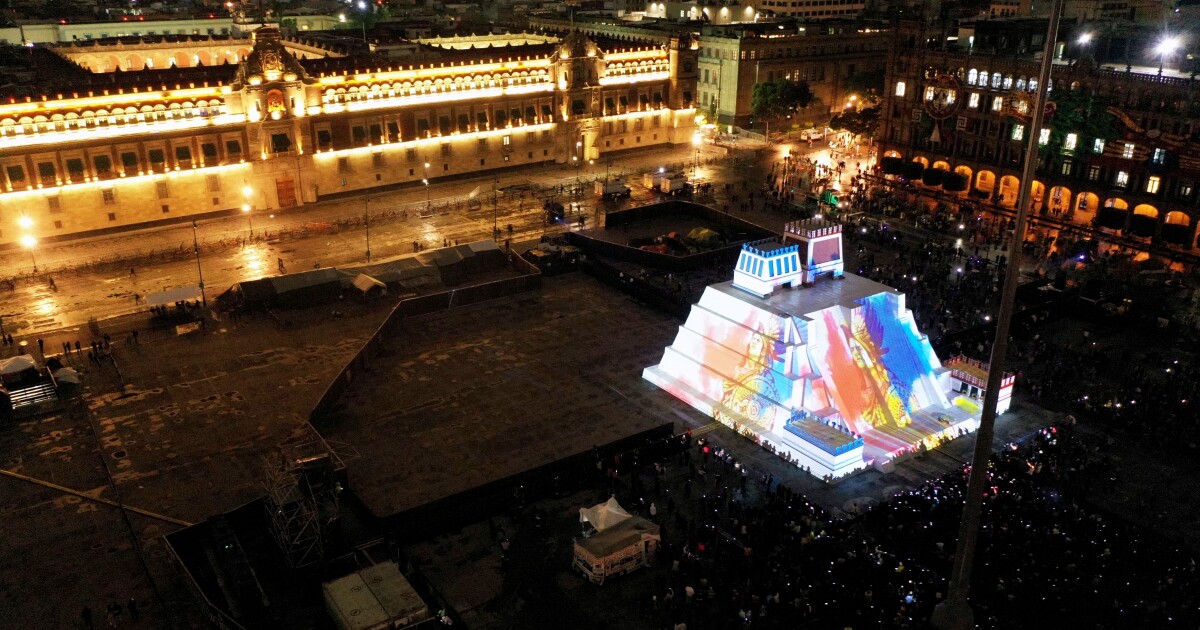[ad_1]
Hurricane Grace made landfall on the eastern coast of Mexico’s mainland early on Saturday, leaving eight dead, and then quickly weakened into a tropical storm and dissipated, officials said.
At a news conference on Saturday afternoon, Cuitláhuac García Jiménez, the governor of Veracruz, told reporters that heavy rainfall in his state resulted in the deaths. No additional details were available.
“We regret that they weren’t able to get out, following the instructions of civil protection,” the governor said.
The National Hurricane Center said the storm made landfall near the resort town of Tecolutla just before 1 a.m., with maximum sustained winds of nearly 125 miles per hour.
After making landfall, Grace weakened and was downgraded to a tropical storm and then dissipated. The remnants of Grace were moving west at about 13 m.p.h.
“Although Grace has dissipated, its remnants will likely move into the eastern North Pacific by Sunday afternoon, where it is likely to develop into a new tropical cyclone next week,” the center said in its final advisory on the system.
The Mexican government allowed all watches and warnings to expire after the system dissipated.
The storm thrashed the Yucatán Peninsula as a hurricane on Thursday, bringing strong winds, heavy rain, power failures and hundreds of evacuations. Just days earlier, the same storm had brought flooding to Haiti, hurting recovery efforts after a devastating earthquake struck the country on Aug. 14.
The Yucatán Peninsula is no stranger to storms during hurricane season.
Last August, Tropical Storm Marco skimmed the tip of it, and in October, Hurricane Delta and Hurricane Zeta struck the peninsula, knocking out power, felling trees, shattering windows and causing flooding along the Caribbean coast.
The Mexican mainland was preparing for strong winds and pouring rain as the storm moves west.
Earlier this week, the storm brought sharp winds and pelting rain to survivors of Haiti’s 7.2-magnitude earthquake, which killed more than 2,000 people.
Grace’s arrival there intensified the need for help in recovering from the earthquake. Videos circulating on social media showed heavy rain pummeling towns and villages, bringing the risk of flash floods and landslides.
Grace is the seventh named storm of the 2021 Atlantic hurricane season, following several days of floods and power failures unleashed this week by Fred. That storm made landfall on Monday afternoon in the Florida Panhandle and moved inland across the southeast and Mid-Atlantic.
A third Atlantic storm, Henri, formed on Monday afternoon as a tropical storm off the East Coast of the United States, becoming the eighth named storm of the hurricane season. It strengthened into a Category 1 hurricane and was expected to make landfall on Sunday on Long Island or southern New England.
The links between hurricanes and climate change are becoming more apparent. A warming planet can expect to experience stronger hurricanes over time, and a higher incidence of the most powerful storms. However, the overall number of storms could drop, because factors like stronger wind shear could keep weaker storms from forming.
Hurricanes are also becoming wetter because of more water vapor in the warmer atmosphere; scientists have suggested that storms like Hurricane Harvey in 2017 produced far more rain than they would have without the human effects on climate. Also, rising sea levels are contributing to higher storm surge — the most destructive element of tropical cyclones.
A major United Nations climate report released this month warned that nations have delayed curbing their fossil-fuel emissions for so long that they can no longer stop global warming from intensifying over the next 30 years, leading to more frequent life-threatening heat waves and severe droughts. Tropical cyclones have become more intense over the past 40 years, the report said, a shift that cannot be explained by natural variability alone.
In May, scientists with NOAA forecast that there would be 13 to 20 named storms this year, six to 10 of which would be hurricanes, and three to five major hurricanes of Category 3 or higher in the Atlantic. This month, in a midseason update to the forecast, they continued to warn that this year’s hurricane season would be above average, suggesting a busy end to the season.
Matthew Rosencrans of NOAA said that an updated forecast suggested there would be 15 to 21 named storms, including seven to 10 hurricanes, by the end of the season on Nov. 30.
Last year, there were 30 named storms, including six major hurricanes, forcing meteorologists to exhaust the alphabet for the second time and move to Greek letters.
It was the highest number of storms on record, surpassing the 28 from 2005, and included the second-highest number of hurricanes on record.
Alyssa Lukpat, Jacey Fortin, Jesus Jiménez, Neil Vigdor, Maria Abi-Habib, Andre Paulte, Derrick Bryson Taylor, Anatoly Kurmanaev, Oscar Lopez, Constant Méheut and Eduardo Medina contributed reporting.
[ad_2]
Source link













